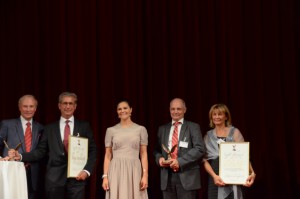Category Archives: Business
business news from China, Sweden and the world.
Zurich invests USD 10million to drive innovation in flood resilience
Stockholm, August 25(Greenpost)– Zurich Insurance Group (Zurich) has joined efforts with the Global Resilience Partnership to launch the Global Resilience Challenge Water Window.
The Water Window is a grant-based competition focused on building resilience to different water challenges, including floods.
Zurich is the first private sector member of the Resilience Partnership and provides a USD 10 million investment to fund solutions to build flood resilience. The Global Resilience Partnership and Zurich call on other corporations to join them so that all can better realize a resilience dividend.
Zurich will invest USD 10 million as part of its long-term commitment to the Global Resilience Partnership (the Resilience Partnership), convened by The Rockefeller Foundation, the United States Agency for International Development (USAID) and the Swedish International Development Cooperation Agency (Sida). The Resilience Partnership is driving a shared global resilience agenda, where humanitarian and development planning is better aligned, deploying precious resources to support innovations, which will build stronger communities that are able to overcome chronic stresses and better handle inevitable shocks.
The Global Resilience Challenge Water Window (the Water Window) invites submissions that will build resilience to different water challenges and which stand to benefit of millions of people. The Water Window will seek to support innovative solutions – or to scale up those that are already working – that fall within one or more focus areas of the Resilience Partnership overall: technology; innovative financing, including risk transfer mechanisms; measurement & diagnostics (e.g. tools that enable better understanding problems and risk caused by water); policy; and learning & innovation (including community practices that enhance awareness, education, engagement, female empowerment, and action orientation). Zurich will look specifically for innovations aimed at enhancing flood resilience in line with its global flood resilience program launched in 2013. The funding is provided by the Z Zurich Foundation.
The Water Window’s goal is to identify and realize strong solutions that will be shared through an open learning platform. Zurich and other corporations joining the Water Window will be part of the challenge’s assessment, selection and development processes. KPMG East Africa Limited, the implementing partner of the first Global Resilience Challenge, will also be the implementing partner of the Water Window, handling all administrative and operational issues.
Beyond the Water Window, Zurich will play an active role in the Resilience Partnership by contributing its market-leading resilience measurement expertise, engaging on finding optimal financing solutions, or supporting the development and implementation of public policy.
Chief Executive Officer Martin Senn said: “Water is one of the most critical development challenges we face today. Tens of millions of people struggle to gain access to clean drinking water every day; a shortage of water is limiting economic growth in many countries, while flooding affects more people each year than any other form of natural disaster. At Zurich, we believe we have a responsibility to use our expertise in insurance and risk management to help communities and households build resilience against such globally interconnected risks. With the commitment of USD 10 million we will build on the progress of our flood resilience program. We invite other companies to join us in the water resilience challenge, where there are a host of issues to focus on beyond floods.”
“Crisis is the new normal, and with so much of the world’s population living on or near water, flooding is often the source of crises,” said Dr. Judith Rodin, president of The Rockefeller Foundation.
“The Global Resilience Partnership is leading the charge to build resilience across the Sahel, the Horn of Africa, and South and Southeast Asia, and Zurich is an excellent addition because of the expertise they can lend to spur innovation in building resilience to flooding. We look forward to welcoming other corporations to the Resilience Partnership, because when communities are resilient, so too are businesses. That’s part of the dividend of investing in resilience.”
P.S.
To get instant access to Zurich’s news releases, calendar and other corporate publications on your iPad, iPhone or Android phone please go to your App Store and get the free Zurich Investors and Media App.
For broadcast-standard and streaming-quality video and/or high resolution pictures supporting this news release, please visit our Multimedia Pressroom.
Zurich Insurance Group (Zurich) is a leading multi-line insurer that serves its customers in global and local markets. With more than 55,000 employees, it provides a wide range of general insurance and life insurance products and services. Zurich’s customers include individuals, small businesses, and mid-sized and large companies, including multinational corporations, in more than 170 countries. The Group is headquartered in Zurich, Switzerland, where it was founded in 1872. The holding company, Zurich Insurance Group Ltd (ZURN), is listed on the SIX Swiss Exchange and has a level I American Depositary Receipt (ZURVY) program, which is traded over-the-counter on OTCQX. Further information about Zurich is available at www.zurich.com.
Corporate responsibility is a key part of Zurich’s strategy and supports its mission to help its customers understand and protect themselves from risk. Zurich is focusing on its strengths as a business, and on key enablers of success – actions it needs to take to achieve its strategic objectives. Zurich thinks about corporate responsibility in the same way, focusing on seven areas that either make use of its insurance, risk management and investment expertise, or are enablers of Zurich’s success. They are:
• Enhancing community flood resilience (see more on Zurich’s global flood resilience program)
• Investing our Group assets responsibly [Zurich is a signatory of the Principles of Responsible Investment (PRI)]
• Working with Zurich corporate customers to help them understand and manage their corporate responsibility risks
• Community investment locally and through the Z Zurich Foundation
• Environmental performance, and health and safety management in its office buildings
• Diversity and inclusion in its workforce
• Responsible supply chain management
Zurich participates in the Dow Jones Sustainability Indices (DJSI), FTSE4Good and CDP.
Zurich has been a signatory of the UN Global Compact since 2011 and is committed to making the Global Compact and its principles part of Zurich’s strategy, culture and day-to-day operations.
Stock Market on Aug. 20
Stockholm, Aug 20(Greenpost)–Stock Market crashed again in Stockholm.
The American fund decreased almost tow percentage points to 1.33 percent from 3.2 percent standing at 651.98 kr yesterday.
Asian fund decrease to minus 11 with a loss of 5564.
Handelsbanken China fund decreased most to 14279 by 16.23 percent. The price decreased to 126 from 152.
Handelsbanken Hållbergenergi decreased by almost 14 percent with a loss of 3398.
Both the European fund and Multiasset are decreasing by over 1000 kr.
In total, the funds ran at a loss of almost 30 thousand kronor. Now only the American fund is in positive while all the others ran at a loss.
China Focus: Economists confident of medium-term 7-percent growth
|
Roundup: China-Pakistan Economic Corridor gains momentum in Pakistan
|
Top story : New rules on officials’ environmental responsibility
China’s policy banks CDB, Exim Bank receive USD93 bln injection
|
Net FDI into China’s financial institutions at USD4.138 bln in Q2, SAFE
| BEIJING, Aug. 19 (Xinhua) — The net inflows of foreign direct investment (FDI) into the financial institutions on the Chinese mainland were 4.138 billion U.S. dollars (25.327 billion yuan) in the second quarter of this year, official data showed on Wednesday. According to the State Administration of Foreign Exchange, FDI inflows into Chinese mainland’s financial sector, including banks, insurers, and securities firms, reached 4.432 billion U.S. dollars (RMB27.127 billion) in the second quarter of the year, while FDI outflows amounted to 294 million U.S. dollars (RMB1.8 billion) in the same time period. The statistics only cover equity investments that enable an investor to own 10 percent or more of voting stocks in a company. Enditem |
Net ODI of China’s financial institutions at USD2.309 bln in Q2
BEIJING, Aug. 19 (Xinhua) — Financial institutions on the Chinese mainland reported net outward direct investment (ODI) of 2.309 billion U.S. dollars (14.129 billion yuan) in the second quarter of the year, according to China’s top foreign-exchange regulator on Wednesday.
Data from the State Administration of Foreign Exchange showed that ODI outflows from Chinese mainland’s financial institutions, including banks, insurers, and securities firms, reached 6.146 billion U.S. dollars (37.615 billion yuan) in the second quarter of the year, while ODI inflows amounted to 3.837 billion U.S. dollars (23.486 billion yuan) in the same time period.
The calculations only cover equity investments that enable an investor to own 10 percent or more of voting stock in a company. Enditem
China increases tax breaks for small businesses
| China increases tax breaks for small businesses BEIJING, Aug. 19 (Xinhua) — The State Council, China’s cabinet, on Wednesday decided to extend tax breaks to more small businesses for their roles in generating jobs and growth. From Oct. 1, 2015 to the end of 2017, companies with annual taxable income under 300,000 yuan (46,900 U.S. dollars) will have their corporate tax halved, said a statement released after a meeting chaired by Premier Li Keqiang. Previously, the threshold was 200,000 yuan. The meeting also extended tax breaks for companies with a monthly revenue of 20,000 to 30,000 yuan from the end of 2015 to the end of 2017. They will be exempted from value-added tax and business tax. The move is the latest attempt to help small businesses, as they provide nearly 80 percent of urban jobs. In the first six months, about 2.39 million small and micro enterprises in China paid reduced taxes, savings them about 8.6 billion yuan, according to figures from the State Administration of Taxation. Enditem |
Turnover of China’s rare earth exchange surges in first 7 months
|
China money market turnover up 115.8 pct o-y to RMB52.2 trln in July
BEIJING, Aug. 19 (Xinhua) — China’s money market turnover soared 115.8 percent year on year to 52.2 trillion yuan in July, according to a monthly financial market report released by the Chinese central bank on Wednesday.
During the first seven months, the money market turnover amounted to 251.8 trillion yuan, registering a year-on-year increase of 84.7 percent.
Interbank weighted average offered rate rose 7 basis points (bp) from the preceding month to 1.51 percent and average pledged bond repo rate gained 2 bps month on month to 1.43 percent in July. Enditem
Securitization in China helps global investors to RMB assets: S&P
BEIJING, Aug. 19 (Greenpost) — Global investors are focusing more on renminbi assets in China, primarily to diversify asset allocation and seek higher returns amid the prospering economy, according to a report by Standard & Poor’s Ratings Services.
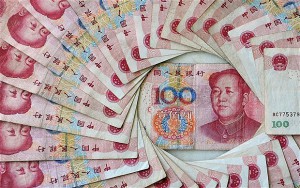
Ongoing improvements in self-governance and information transparency in the securitization market are likely to support the development of China’s capital market, according to “China securitization: linking international investors and renminbi assets”, released Tuesday by the leading rating agency.
“China’s securitization market is small compared with its bond market, but its evolution might indicate answers to some questions regarding China’s capital markets,” said Standard & Poor’s credit analyst Vera Chaplin.
Starting in late 2014, a number of infrastructure enhancements in China’s securitization market had raised issuance efficiency and promoted market self-governance, while narrowing information gaps, Chaplin noted.
For instance, the formal information disclosure requirements in China’s asset-backed securities (ABS) and residential mortgage-backed securities (RMBS) securitization, set out by China’s National Association of Financial Market Institutional Investors in May, enhanced transparency and enabled investors to better understand the performance of transactions.
The result has been an increase in interest from international investors, he said.
Participation of global investors are believed to benefit China’s capital markets. Apart from providing additional capital, a more international scheme will support funding diversity for issuers and promote market infrastructure construction to meet international standards.
“More than 140 billion yuan (21.9 billion U.S. dollars) in securitization transactions was issued under the two major securitization schemes in China in the first six months of 2015,” Chaplin said.
“The transactions reveal a standardized platform for asset collections and how to allocate assets’ economic value, the disclosure of more information so that risks could be analyzed, and the isolation of asset sellers’ credit risk,” Chaplin said.
“As a result, international investors now have an opportunity to reach economic sectors that in the past they could not because of the smaller scale of the issuers or difficulties involved in finding the value of the assets,” Enditem
Why Chinese currency has two names? Yuan and Renminbi. You can read more: http://www.bbc.com/news/10413076
BOC Cross-border RMB Index increases 21 points m-o-m in June
BEIJING, Aug. 19 (Xinhua) — The Bank of China (BOC) Cross-border Renminbi (RMB) Index (CRI) increased 21 points month on month to 293 in June, according to the BOC on Wednesday.
The degree of activity in RMB cross-border transactions hit a record high in the month, and the degree of activity in RMB direct investment also witnessed year-on-year and month-on-month growth in June.
Meanwhile, the RMB under the current account saw a net inflow in June. Enditem
Wang Jianlin named world’s richest Chinese
HANGZHOU, Aug. 19 (Greenpost) — Wang Jianlin, chairman of China’s property and entertainment giant Dalian Wanda Group, has overtaken Hong Kong’s Li Ka-shing to become the richest Chinese in the world, according to the new Hurun Rich List, reported Xinhua.
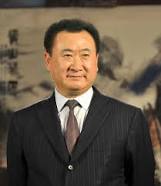
Wang’s wealth increased more than 50 percent year on year to 260 billion yuan (40.6 billion U.S. dollars) as of early June, Hurun Research Institute said in a press release on Wednesday.
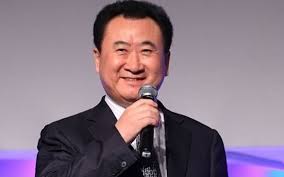
Hong Kong tycoon Li Ka-shing, 87, was the second richest with a fortune of 200 billion yuan and Jack Ma, founder and chairman of Internet giant Alibaba, was named third richest with wealth of 165 billion yuan.
The list includes 1,577 tycoons from 18 countries and regions worth a minimum 2 billion yuan. Of those listed, 302 are from Kong Kong, Macao, Taiwan and foreign countries.
Their combined wealth was 12.7 trillion yuan, equalling the annual gross domestic product of Russia.
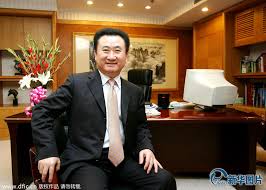
Rupert Hoogewerf, chair and chief Hurun Report researcher, said that Hurun had released this first rich for Chinese worldwide in response to global attention given to Chinese business people.
Hurun has released a China Rich List since 1999.
Wang Jianlin started with real estate. In 2001, at a real estate yearly meeting, he was there together with Feng Lun, Alex Xu and Liu Yonghao as keynote speaker. 14 years later, he became the first richest Chinese while the others still very rich, but mostly focusing on real estate.
Wang has been transforming his real estate into cinemas and entertainment site. He also collected a lot of world famous art works.
He thinks internet is just a tool while Jack Ma is using internet to make numerous shops. Let’s see what will happen in the next 14 or 15 years.
Wang was born in Oct. 24, 1954. He joined the Chinese army in 1970 and graduated from Liaoning University in 1986.
Wang’s success benefitted from China’s opening up policy and the support of governments at various levels. It was also his own and his team’s wisdom to understand the leader’s will and transform his group a couple of times according to the trend.
Source Xinhua
Editor Xuefei Chen Axelsson

